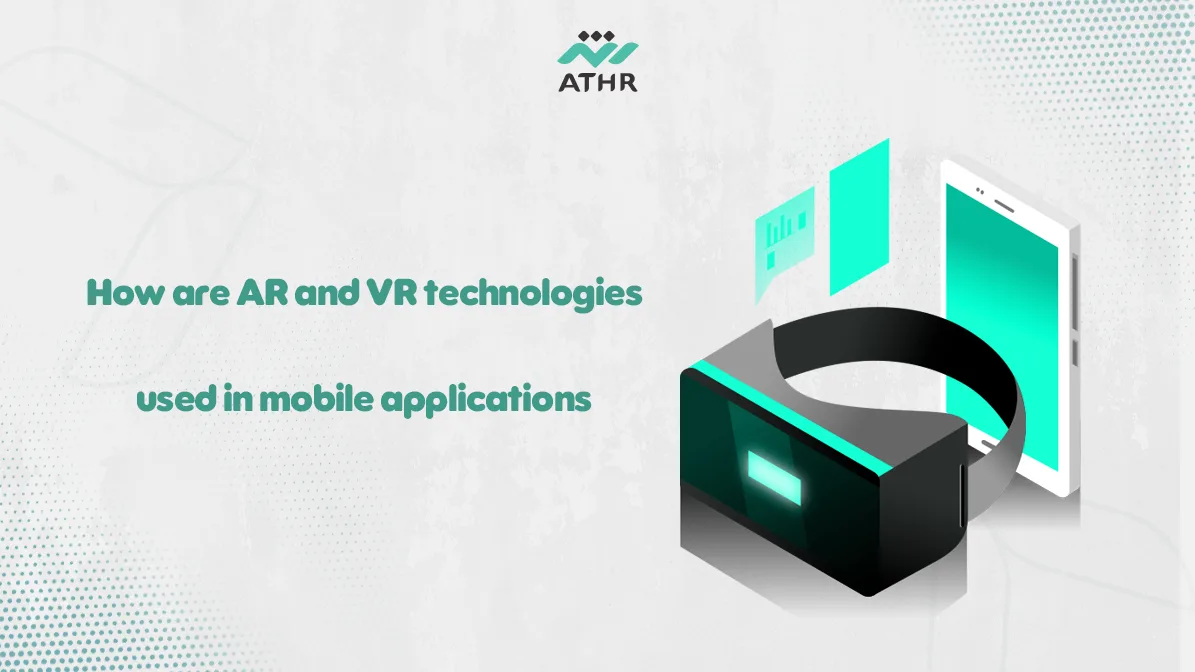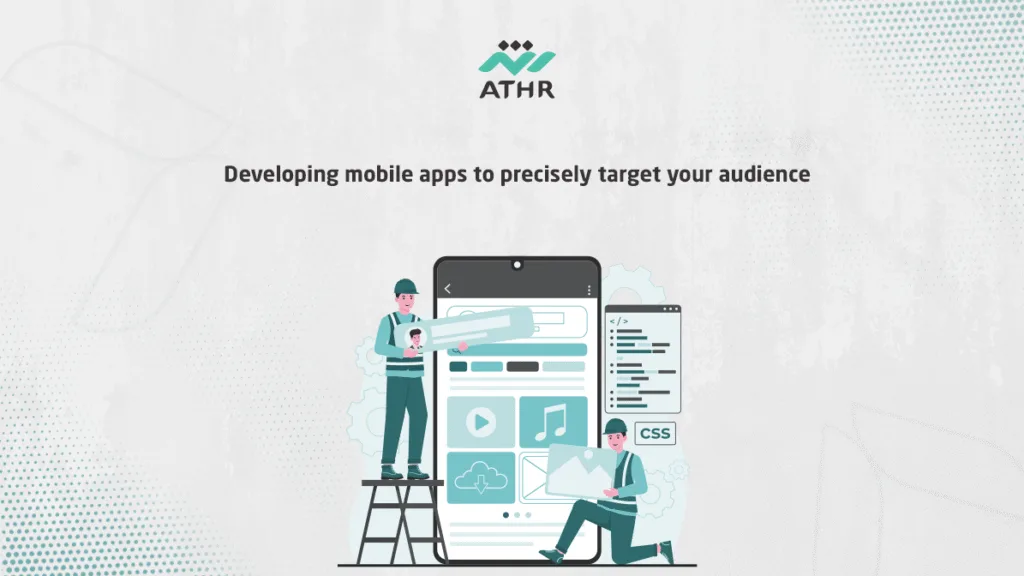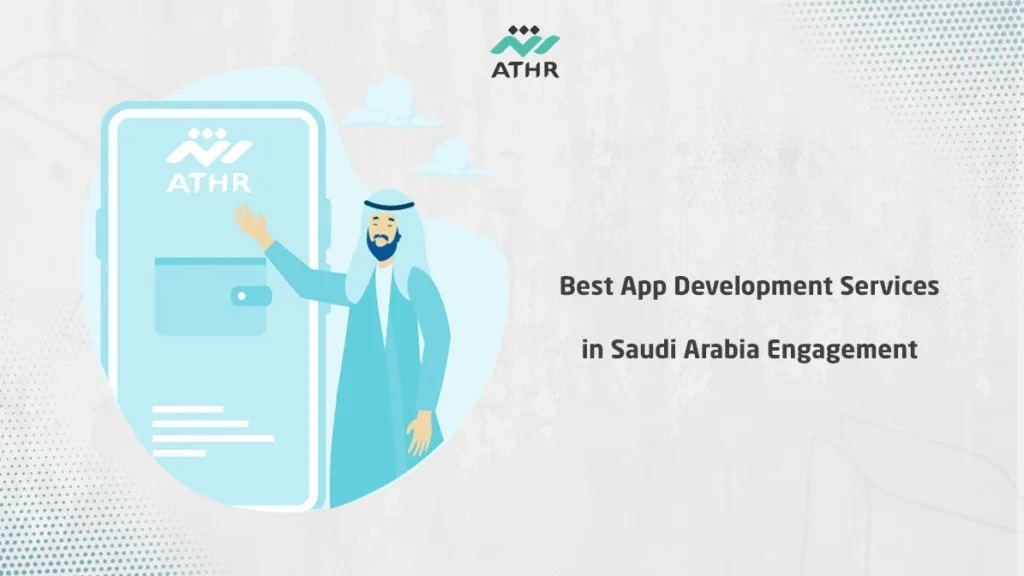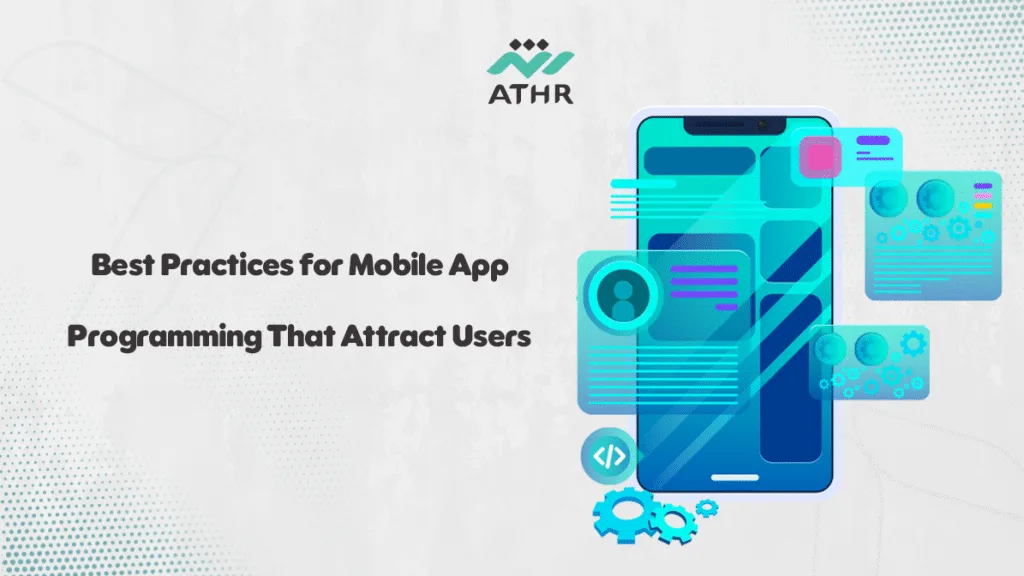In a world evolving at lightning speed, applications are no longer just tools on your phone; they have become windows that open new worlds for you!
This is exactly where the magic of AR and VR technologies appears in mobile applications, which have changed the way we interact with the reality around us.
The phone is no longer just a means for browsing or entertainment, but has become a gateway to an interactive world that makes you feel like you are part of the experience itself.
But how can these technologies add real value to mobile applications? And how do companies benefit from integrating them into their services?
👇This is what we will discover together in this article
Open the doors of the future for your application with AR and VR technologies — 📞Contact us to start the first steps.
جدول المحتوي
- What is meant by AR and VR Technologies in Mobile Applications?
- How to Integrate AR and VR Technologies into Mobile Applications
- Why Have AR and VR Technologies Become Essential for User Experience?
- Fields of Use for AR and VR Technologies in Mobile Applications
- What are AR and VR technologies in mobile applications?
- How does a mobile application development company use AR and VR technologies?
- Why do companies need applications with AR and VR technologies?
- What is the best company for developing mobile applications with AR and VR technologies?
- What are the most important fields that use AR and VR technologies?
- How does Athr Company ensure the success of the application?
- What is the future of AR and VR technologies in mobile applications?
What is meant by AR and VR Technologies in Mobile Applications?
Before we talk about how to use them, let’s clarify the idea simply:
- Augmented Reality (AR) is a technology that allows you to add digital elements to the real world around you.
A simple example: an application that measures furniture in your room before purchase, or a game that displays its characters in your home via the camera!
- Virtual Reality (VR) takes you to a completely new world using special goggles or headsets.
Imagine, for example, an application that puts you inside a 3D training room or a virtual tour of a hotel before booking — as if you are living the experience yourself.
✅ In other words, AR adds something to reality, while VR creates an entirely new reality.
The Difference Between Augmented Reality (AR) and Virtual Reality (VR)
The difference between them is simple, but its impact on the user experience is significant:
| Element | Augmented Reality (AR) | Virtual Reality (VR) |
| Usage Environment | Integrates digital elements into the real world | Transports you to an entirely digital world |
| Required Tools | Phone camera only | VR headset or dedicated earphones |
| Degree of Interaction | Simple and fast interaction | Full and immersive interaction |
| Primary Goal | Enhancing reality | Replacing reality |
🎯Together, the two offer the user an astonishing visual and sensory experience that makes the application more interactive and realistic — which is what modern companies seek in fields like education, medicine, real estate, and games.
How Do These Technologies Work Inside Smartphones Applications?
It may seem complicated, but it actually relies on a smart blend of programming, artificial intelligence, and the phone’s hardware itself.
Here are the steps in a simplified way:
1. Camera and Sensors:
Augmented Reality applications use the mobile camera to recognize the surrounding place or objects.
For example, when you point the camera at an empty room, the application can determine the dimensions and distances to display the furniture realistically.
2. Processing with Artificial Intelligence (AI):
Here, data is analyzed to accurately determine the locations of objects and create a digital environment that interacts with the user in real-time.
3. Display and Interaction:
Digital elements appear on the screen in harmony with reality, or they are displayed inside a VR headset for you to fully live the experience — from sight to sound and even movement.
This technology does not just need an innovative idea, but also a professional programming company capable of seamlessly integrating technology and visual experience — like Athr Company for developing AR and VR applications, which innovates smart solutions that make the user live inside your application as if they were a part of it.
How to Integrate AR and VR Technologies into Mobile Applications
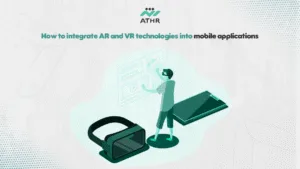
Integrating AR and VR technologies into mobile applications is no longer a luxury; it has become an essential element in the success of any application that seeks to attract users and provide an immersive and unique experience.
The idea is simple: when the user opens the application, they don’t just interact with buttons or text; they live a real digital experience that merges the real and virtual worlds.
This is done by combining three main components:
1. Interactive Design:
Every visual detail, from icons to movements, must be built to enhance the feeling of realism.
2. Integrated Technologies:
Libraries and frameworks (SDKs) such as Apple’s ARKit and Google’s ARCore are used to determine locations in the real world and accurately display virtual elements on them.
3. AI & Real-Time Processing:
Here comes the power of the application to interact instantly with the user — by tracking movement, gestures, and sometimes even facial expressions.
Interactive education applications use augmented reality to display 3D models that explain science lessons in an astonishing visual way, while virtual shopping applications allow the user to try the product in their environment before buying.
This integration between technology and experience makes the user more connected to the application and increases the interaction and retention rates.
Steps for Designing an Interactive Application with Augmented Reality Technology
If you are thinking of entering this field, here are the steps for professionally and systematically designing an interactive application with Augmented Reality technology (AR App):
1. Start with a clear idea:
What is the purpose of the application? Is it for education? Marketing? Games? Clarity of purpose makes choosing the appropriate technology easier.
2. Design the User Experience (UX) first:
Make the interaction simple and enjoyable. The user does not want a complicated application, but an easy experience rich with visual effects.
3. Use ready-made libraries:
Such as ARKit, ARCore, or Unity 3D — they provide an integrated environment for easily designing scenes and 3D elements.
4. Test the application in the real world:
Ensure the accuracy of element display on the camera, color balance, and natural movement response.
5. Get support from a specialized programming company:
Companies like Athr for Application Development have practical experience in designing educational, commercial, and entertainment applications using AR and VR technologies that keep pace with the latest global standards.
💡Interactive experience is the key. The more the user feels they are “part of the story,” the greater the chances of your application’s success and spread.
Tools and Platforms That Help You Program Virtual Reality Applications
Developing Virtual Reality applications requires specialized tools to provide a complete realistic environment. Here are the most important ones:
The most famous engine for 3D games and applications. It provides a powerful environment for developing VR applications with support for various headsets like Oculus and HTC Vive.
- Unreal Engine:
Suitable for applications that require realistic graphics and high-quality details. Ideal for virtual training applications and educational tours.
- ARKit and ARCore:
Provide essential tools for developers to easily create Augmented Reality applications on iOS and Android systems.
- Blender and Maya:
For designing 3D Models that appear inside the application.
📌 These tools are not just software; they are platforms that transform ideas into real interactive experiences. And with support from a professional technical team like Athr Company, any idea can be turned into an amazing application that immerses the user in a stunning digital world.
The Most Important Challenges Facing Developers When Integrating Technologies
Despite the beauty of the experience, integrating AR and VR technologies into mobile applications carries some technical challenges that require real expertise to overcome:
- Device performance limitations: Not all phones are capable of running these technologies efficiently, which requires performance optimization.
- Tracking and interaction accuracy: Variation in lighting or rapid movement may cause errors in the display of virtual elements.
- Large application size: 3D images and interactive data increase file sizes.
- High development cost: Professional applications require a full team of designers, developers, and testers.
But with proper planning and a partnership with a specialized development company, all these obstacles can be overcome, and an amazing and smooth user experience can be achieved.
Don’t wait for the future… Design it with AR and VR technologies today!
Why Have AR and VR Technologies Become Essential for User Experience?
Applications are invading every detail of our lives. Users are no longer just looking for a “service” the application provides, but for an experience to live.
Here is where the role of AR and VR technologies in mobile applications emerges, transforming any simple interaction into a real sensory adventure.
📊 Applications relying on Augmented and Virtual Reality achieve a 67% higher interaction rate than traditional applications, because the user feels they are part of the experience, not just a content recipient.
The Importance of Virtual Reality in Enhancing Visual Interaction
Virtual Reality (VR) gives the user a chance to live inside the digital world, instead of just watching it.
Imagine opening a training application to find yourself in a 3D environment where you interact with tools, or entering a tourism application that gives you a virtual tour inside a city before traveling there!
This visual realism makes the experience more convincing and pushes the user to stay inside the application for longer periods.
Benefits of Using Virtual Reality in Mobile Applications:
- Creating interactive 3D environments that help the user learn or be entertained.
- Enhancing the feeling of realism, which increases trust in the product or service.
- Improving Conversion Rates through an immersive experience that encourages decision-making (such as purchasing or subscribing).
The Role of Augmented Reality in Improving User Interaction with Content
As for Augmented Reality (AR), it doesn’t take you to another world, but brings the digital world to your reality!
Using the phone camera, you can see digital content merged with the real environment around you.
This technology elevates user interaction with content because it makes them participate in the experience themselves.
Instead of just reading or watching, the user can touch, move, and interact with realistic virtual elements.
The Most Important Uses of Augmented Reality in Mobile Applications:
- Interactive Education (such as science and engineering applications).
- Marketing and E-commerce (trying products before purchase).
- Entertainment Games (such as Pokémon Go).
Therefore, many modern programming companies rely on integrating AR technologies into their applications to increase the interaction rate and achieve a rich and visually impressive experience.
How Do These Technologies Increase User Retention Rate Within the Application?
One of the biggest challenges in the world of applications today is User Retention, as statistics indicate that more than 70% of users leave the application within the first 3 days of use.
But when Virtual and Augmented Reality are used, the equation changes completely.
Visual interaction, immersive effects, and the ability to control the experience — all these elements push the user to return to the application repeatedly.
How does this happen?
- Virtual Reality provides a sense of “personal experience,” which generates curiosity to discover more.
- Augmented Reality provides constantly renewed content based on the environment and location, making the user feel that the application “interacts with them.”
- Applications that offer rewards or progressive experiences through AR and VR technologies motivate the user to continue for longer periods.
Don’t waste your budget in the wrong place! 📘 Here is a guide to choosing the perfect programming company for your business.
Fields of Use for AR and VR Technologies in Mobile Applications
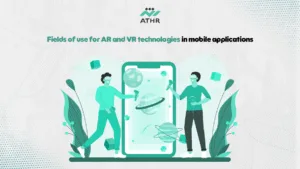
AR and VR technologies are rapidly expanding in mobile applications, to include almost every imaginable field — from education to medicine, and from marketing to entertainment.
The reason is simple: these technologies don’t just display information; they make the user live it.
The most prominent fields where Virtual and Augmented Reality have revolutionized user experience and digital interaction.
🎓 Education and Training Through Interactive Applications
Learning no longer relies on reading only.
Today, thanks to Augmented Reality in educational applications, students can explore planets in space, study the human body in 3D, or even attend a real simulation within an immersive educational environment.
Key Uses of AR and VR in Education:
- Virtual Reality (VR): To create virtual labs and scientific experiments that simulate reality without any risks.
- Augmented Reality (AR): To display visual explanations on books or images simply by pointing the camera at them.
Here comes the role of specialized programming companies like Athr Company, which designs interactive educational applications that connect fun and knowledge, and transform content into a living, unforgettable experience.
🎮 Games and Entertainment with Extended Reality Technologies
Games are the field where AR and VR technologies were born, but they didn’t stop there.
Today, we see interactive games that blend the real and fantasy worlds in an astonishing way.
Augmented Reality (AR) makes the player part of their real environment — as seen in games like Pokémon Go.
As for Virtual Reality (VR), it transports the player to 3D digital worlds, where they live adventures full of movement, visual, and audio effects.
Advantages of AR and VR-based Games:
- An immersive experience that hooks the user for hours.
- Increased player loyalty to the application.
- High potential for generating revenue from In-App Purchases.
🏥 Medical and Real Estate Applications as Advanced Examples
Imagine seeing human body organs in front of you with precise details through the mobile camera — or taking a tour inside a house that hasn’t been built yet!
This is what Virtual and Augmented Reality applications offer in the fields of medicine and real estate.
In Medicine:
- Virtual Reality is used to train doctors for surgery through realistic simulation without any danger.
- Augmented Reality helps display information about organs during operations or medical examinations.
In Real Estate:
- Allows buyers to take virtual tours inside apartments and buildings before purchase.
- Developers can display future projects to clients in a realistic and attractive way.
These applications have proven effective in increasing the sales rate and speed of decision-making, as they reduce the gap between imagination and reality.
Your next application needs a futuristic vision — 📖 Read about the latest development technologies that cannot be ignored.
AR and VR technologies in mobile applications have become an essential part of the future of technology.
They make the user experience more interactive and fun, and give applications a distinctive realistic character.
If you are thinking of developing your application, start today with a mobile application development company to create an interactive experience that will impress your audience.
Your idea deserves to be seen in the virtual world — 📞Contact us and start execution today.

